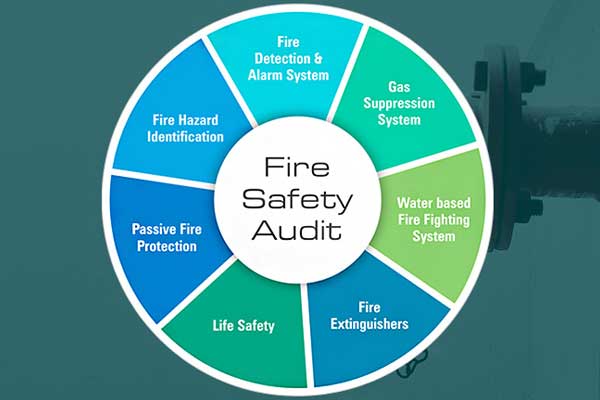Streamline Your Construction Administration with Edara’s Powerful Management Solution
In the fast-paced world of construction, efficient administration is paramoun...

Just take a minute and think about how many materials in your workplace are flammable. This will allow you to understand how serious fire is as a threat to workplace safety. fire can not only severely impact business continuity but can also harm workers extensively. This is why many countries like Australia have rigorous fire safety regulations and standards that must be utilised as a guide for all businesses.
In this article, we will briefly discuss the Australian fire safety planning, regulations and requirements, going on to talk about the best ways to meet legal requirements for fire safety through a fire safety audit.
To appropriately adhere to the fire safety standards and regulations, Safework Australia mandates businesses to ensure that the workplace has appropriate plans and procedures to respond quickly to emergencies. Hence, emergency planning is at the core of fire safety. Such emergency plans and procedures should be customised based on an in-depth assessment of all hazards within the individual workplace, be it a site or a building. The focus of the planning should be on feasibility and practicality. Organisations are also urged to assess the work activities undertaken by any business, emphasising the potential risk and consequences of ill-managed emergencies. Hence, the focus of the assessment should be on the following:

Regular fire risk assessments are one of the easiest methods to ensure that you and your workplace fully comply with all necessary legal obligations associated with fire, safety planning, and protection. Such assessments impart valuable insights if conducted by a knowledgeable, experienced and suitably qualified individual.
A fire safety audit can be described as a systematic, comprehensive and vigilant inspection of your workplace to review its current fire safety and protection systems, equipment, practices and protocols. The purpose of a fire safety audit is to:
The now obsolete Australian standard, 4645, was helpful as a reference guide when conducting fire safety audits in Australia. The standard was helpful in creating a structured process for the auditing phenomena, helping the auditors to effectively evaluate the efficiency of fire safety measures in a structured manner. The standard included recommendations for delegating responsibilities, reporting measures and auditing processes.
It is important to remember that audits are not static affairs and, therefore, should be conducted to reflect the organisation’s current safety measures and practices. Additionally, this dynamic procedure should also mirror any changes in the building code, construction code or national regulations. Similarly, when there are any changes made to the Work Health and Safety (WHS) regulations, these variations should also reflect in your building, equipment and hazard control methods.
The fire safety audit should be conducted annually to verify the adequacy of fire safety systems, components, equipment, procedures, and processes. Additionally, fire safety audits may be conducted in response to the following:

Fire safety must be highly specialised and adherent to building codes to be effective. We offer expert advice, assistance and templates related to all aspects of fire safety systems, including the design and specification of fire systems to project management. Our services can even assist you in recommending the appropriate training programmes to your staff to help enhance awareness, competence and adaptability, thereby improving your emergency preparedness.
Also read : ” what is a safety audit, and why is it important ? ”
A fire safety audit can be described as a review of the building document and premises to determine its preparedness for fire safety management. To use safety audit software, you can contact Edara systems.
Comments